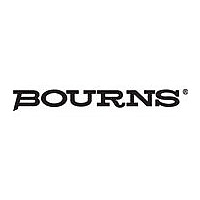TBU-LAB1 Bourns Inc., TBU-LAB1 Datasheet

TBU-LAB1
Specifications of TBU-LAB1
Related parts for TBU-LAB1
TBU-LAB1 Summary of contents
Page 1
... This application note describes the need for circuit protection on RS-485 serial device ports, and introduces a solution using Bourns® TBU® High-Speed Protector (HSP), Gas Discharge Tube (GDT) and Transient Voltage Suppression (TVS) products to meet the required industry standards on RS-485 port interfaces ...
Page 2
... Displayed in Table 1 are the interface specifications for RS-485 ports. Key electrical parameters +12 V operating voltage with 32 Mbps data transfer at distances of 1200 m are included. A fully compliant RS-485 port must meet IEC 61000-4-2 (ESD), IEC 61000-4-4 (EFT) and IEC 61000-4-5 (Surge) standards. TBU-CA065-100-WH Table 1: RS-485 Interface Specifications Differential Max. number of drivers Max ...
Page 3
... The TBU® HSP offers a significant performance increase in terms of response time easy to place and route a TBU® HSP in a design since the TBU-CA package measures a mere 6 mm. The TBU® HSP is provided in a surface mount DFN package and meets industry standard requirements such as RoHS* and Pb Free solder reflow profiles ...
Page 4
... TBU® HSP. Due to the layered protection scheme, the TVS array is fully protected by the TBU® HSP and the TBU® HSP is fully protected by the Fast GDT. The limits of surge protection are then those of the GDT itself. Alternative combinations can be created based on the system specifications. 05/11 • ...
Page 5
... RS-485 drivers. 2030-23T-SM-RPLF Why Bourns? TBU® HSP technology is unique to Bourns, a company that has been a proven leader in the circuit protection industry for several decades. Bourns invests in innovative new products through internal development and strategic acquisition of companies or products lines. Bourns serves diverse markets from computers and peripherals to telecommunications. The company’ ...











